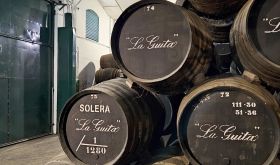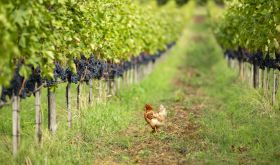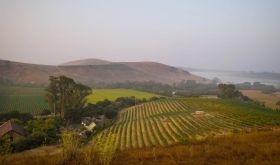From £11.20, or 22 leva for the 2008
Find this wine
We Brits know well that Bulgaria has the ability to produce thoroughly satisfying red wine. Our shelves were awash with bargain Cabernet Sauvignon in the early 1980s and then Gorbachev's anti-alcohol measures in the Soviet Union (just before its downfall; could there have been any connection?) had the most devastating effects on the wine industry in all of its principal wine supplying countries, including Bulgaria. See Bulgaria – the good, the bad and the ugly for an account of my first wine visit there in 2003, and see Bulgaria wakes up for some more encouraging tasting notes taken in 2006.
Life has not been easy for those trying to export Bulgarian wines and they have rather fallen off the radar outside Bulgaria itself. Congratulations then to both importer (Bulgarian Vintage Ltd of London NW10) and producer of Zagreus, Vinica 2007 Upper Thracian Lowland who have come up with a really unusual, ambitious and successful red based on Bulgaria's signature grape variety Mavrud. This innovative wine is made, most unusually for Bulgaria, by drying some of the grapes for two to three months after the harvest on racks, the method that is so common in north-eastern Italy for the likes of Amarone. (See dried grape wines in the Oxford Companion to Wine.)
Zagreus the winery looks ultra-modern on its website and was built in 2004. It was called Zagreus (Greek: Ζαγρεύς) because in Greek mythology Zagreus was identified with Dionysus/Bacchus. A cave nearby is supposed to have been a temple to this god of wine. In Bulgaria, 14 February is not St Valentine's but the day of the patron saint of vintners, St Tryphon. The photograph and text below illustrate what happens that day according to another winery not far from Zagreus, Villa Vinifera, whose 2008 Mavrud will be available in the UK next month from www.villavinifera.co.uk but does not have the distinction of the Vinica.
'On St Tryphon's day the ritual cutting of the vines is taking place. It prompts  for the approaching spring and the beginning of agricultural activity. Trimming is mainly done by men, but the housewife has kneaded and baked warm bread from early morning. The bread is decorated with a trellis vine, heavy with fruit – grapes, which have been modeled from the paste. She has prepared a chicken stuffed with manna croup and all this is placed into colorful new bag. Early in the morning she gives it to the householder with wooden wine vessels full of wine and sends him to the gate. After the traditional church service the men head to the vineyards, led by a piper.'
for the approaching spring and the beginning of agricultural activity. Trimming is mainly done by men, but the housewife has kneaded and baked warm bread from early morning. The bread is decorated with a trellis vine, heavy with fruit – grapes, which have been modeled from the paste. She has prepared a chicken stuffed with manna croup and all this is placed into colorful new bag. Early in the morning she gives it to the householder with wooden wine vessels full of wine and sends him to the gate. After the traditional church service the men head to the vineyards, led by a piper.'
The Zagreus winery was built, doubtless with a large injection of EU money, by Jordan Kostadinov, in Purvomai/Parvomay just east of Assenovgrad, a name which has long been associated with superior Mavrud, and the ancient city of Plovdiv, at one stage named after the father of Alexander the Great who captured it in 342 BC.
Zagreus aim to make this Vinica wine, named after the Kostadinov family's native village, apparently, rather than as a play on any word meaning 'wine', the winery's flagship.
Associated with the Zagreus winery are 120 hectares of vineyards, which must allow for a certain amount of selection. I have been assured that they have just been certified organic, and that the soil is mostly dark to light red (the colour of the soil always seems to be its most important characteristic in ex-Soviet-influenced lands) with a high iron content.
Certainly this wine tastes as though it has certain tonic properties. It is long on every sort of phenolic you could think of – colour, tannin, flavour – and needs some powerful food to go alongside. It rather overwhelmed the beetroot arancini, deep-fried balls of beetroot-flavoured risotto, that I tried it with in the restaurant at Tate Britain (excellent wine list). I could imagine it going well with grouse, long-hung venison or some other strong game. But it's a fascinating wine with just a slightly tarry undertow. It doesn't have the bitter cherry aspect of a Valpolicella Ripasso but it does have the sour plum and velvet character of – guess what? – Mavrud. The fruit is fresh, clean and appetising and someone clearly knows how to make wine here.
There's no hurry to drink the 2007 although I see that the winery's online store is now offering the 2008, at 22 leva (just under $15). You can also find a list of retailers in Bulgaria, Germany and Austria here.
At the time of writing all retailers specified on wine-searcher.com were in the UK. This wine should change your perceptions of Bulgarian wine – and would of course be great (ie sneaky in the extreme) for a blind tasting.













